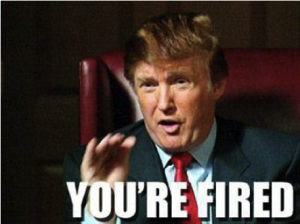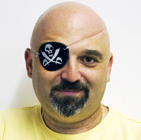How to hire and manage the best remote team

Ross Kimbarovsky is the Founder of Crowdspring, the marketplace for logo design, business card design, graphic design, website design and copywriting.
Ross Kimbarovsky spent weeks trying to recruit an engineer. He talked to local engineer associations, read countless resumes, and conducted a lot of interviews.
Finally, he narrowed it down to the top candidate and offered her the job. Exciting!
Three weeks later, he fired her.
“She just wasn’t the right fit,” says Ross, a cofounder of creative service marketplace crowdSPRING. “It was a very painful process for us…we found ourselves in the situation of having to start that search from the very beginning.” And Ross was having a hard time hiring good team members for other positions, as well.
So what he was doing wrong?
Ross was only hiring local employees.
“We made the mistake of making geography one of our most important factors for the first couple of years of our life as a company, and it hurt us because we weren’t hiring the right people,” says Ross. “We may have been hiring the best people out of a pool of candidates, but they weren’t the right people for our team.”
Today Ross manages a team of 14 people who are based all over the world. Even the local team members telecommute. And his small remote team successfully supports a community of 200,000.
In his Mixergy course, Ross shows you how to do it. Here are three highlights from the course.
1. Gather Intelligence
 In the very beginning, Ross and his cofounder didn’t know what kind of customer service people they needed.
In the very beginning, Ross and his cofounder didn’t know what kind of customer service people they needed.
“We didn’t know if we needed to hire people who were good on the phone, people that were good writers, or people that could speak many different languages,” he says.
And before you can figure out what kind of employees you need, you have to understand the job you’re hiring them to do, says Ross. Otherwise you’ll hire the wrong people and set new hires up for failure.
So how do you make sure you understand the job?
Learn from the Inside
To understand the job, do it yourself.
Before Ross and his cofounder hired customer service reps, they decided to handle customer service themselves. “We committed to do this job ourselves so we could understand the kind of people we needed to hire, and when we hired them, what we would help them and train them to do,” he says.
Ross also wanted to give new hires everything they’d need to be successful. “We were able to sit down [with new hires] and say, ‘here is what we’ve learned to help you get started,’” he says. “We didn’t throw them out into the field and say, ‘Now you figure it out on your own,’ because that’s unfair.”
2. Don’t Rush to Commit
 If you find a great candidate, you should snap them up and offer them the job, right?
If you find a great candidate, you should snap them up and offer them the job, right?
Wrong.
“When we started, when we found somebody we thought was a good engineer or good customer service person or good marketing person, we would extend an offer and hire them as a full time employee,” he says.
But Ross says that’s a bad way to hire.
“In one case, the first person we hired, literally the first engineer we hired when we first started out, we realized [it was a] mistake after just a handful of days,” he says.
So how do you find out if someone is a good fit without offering them the job?
Get to Know Each Other First
Ross gives all potential new hires a 30-day contract, no exceptions.
“We didn’t want to tie ourselves to somebody who just could not do the work well or who didn’t fit well with the team,” he says.
Ross contrasts two employees he initially hired on 30-day contracts. Both were based in Brazil and were having audio issues. The first employee promised to order a headset, but he still didn’t have a headset a few weeks later. Meanwhile, the second employee called another team member to find out which headset the rest of the team used and had one priority shipped to Brazil.
“Here is somebody who solved that problem immediately,” says Ross. “He didn’t wait even five minutes to start solving it and was conscientious enough to follow up and make sure that he had it. When we started the next call in a couple of days, he had a headset.”
3. Channel The Donald
 Sometimes a team member just doesn’t work out.
Sometimes a team member just doesn’t work out.
Ross says he once hired someone who was “late for the first four days of their job, four hours a day on the average.”
But Ross kept giving him leeway because he wanted to help him grow into the position. “I recognized that I was investing a lot of my time counseling,” he says. “A lot of my time [was spent] managing a problem that just became a bigger and bigger problem. If you end up doing that with an early employee, where you are investing 30% of your time counseling effectively, you’re going to suffer. Your product is going to suffer. The rest of your team is going to suffer.”
What’s worse, a low-performing team member can affect high-performing team members. “It’s infectious,” he says. “It’s like a disease when you have somebody who is not performing well.”
Fire Them Quickly
When it becomes clear that a team member isn’t working out, fire them quickly to stop the bleeding. The sooner you do it, the better for your team.
“The most important lesson in firing is, as difficult as it is—and I have fired plenty of people in my career—you have to do it to protect your company and the rest of the team,” says Ross. “You are undermining the entire team and your company when you let people who are not performing continue to work for you.”
Cheat sheet written by April Dykman. Production notes by Jeremy Weisz.
